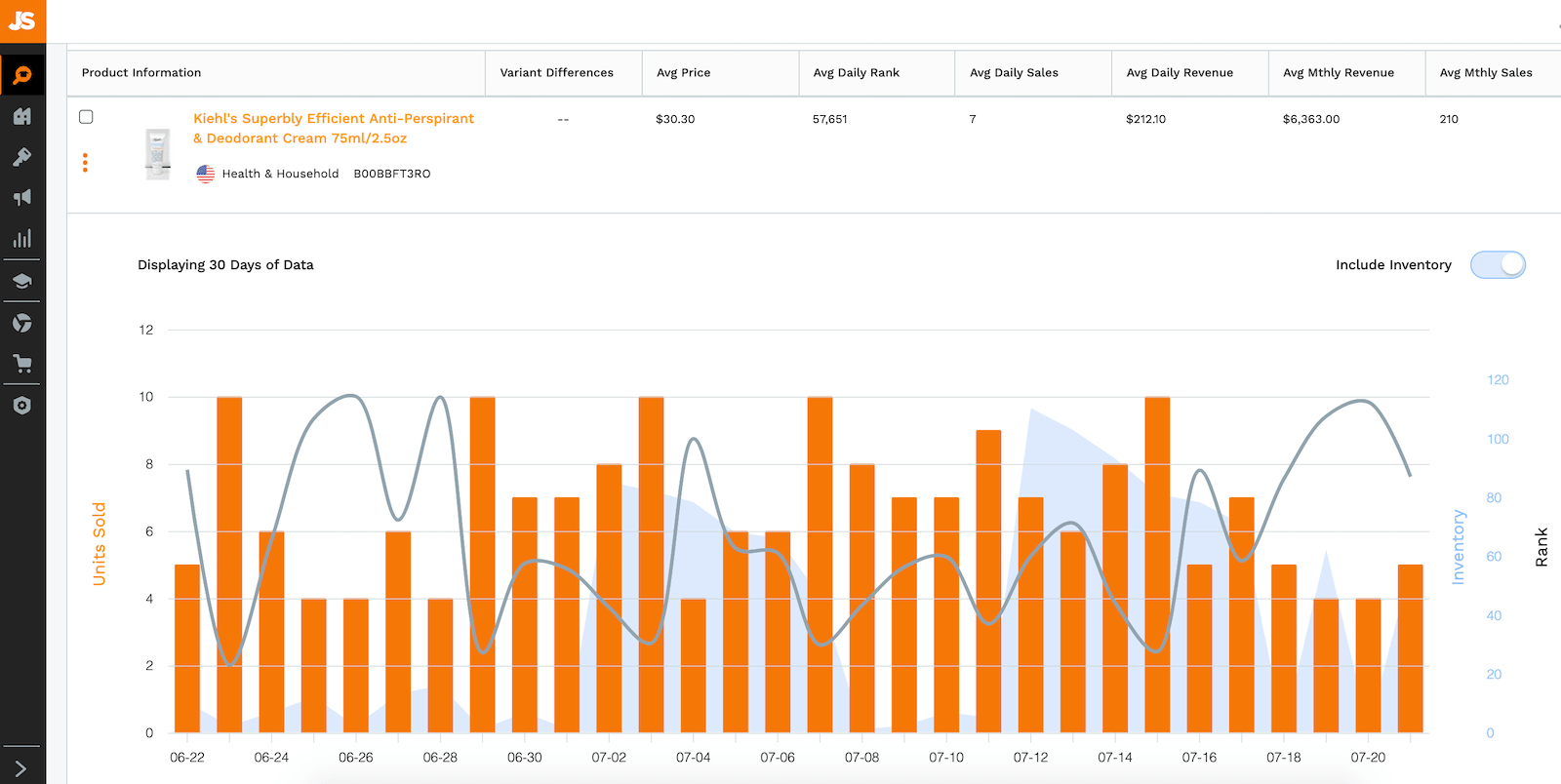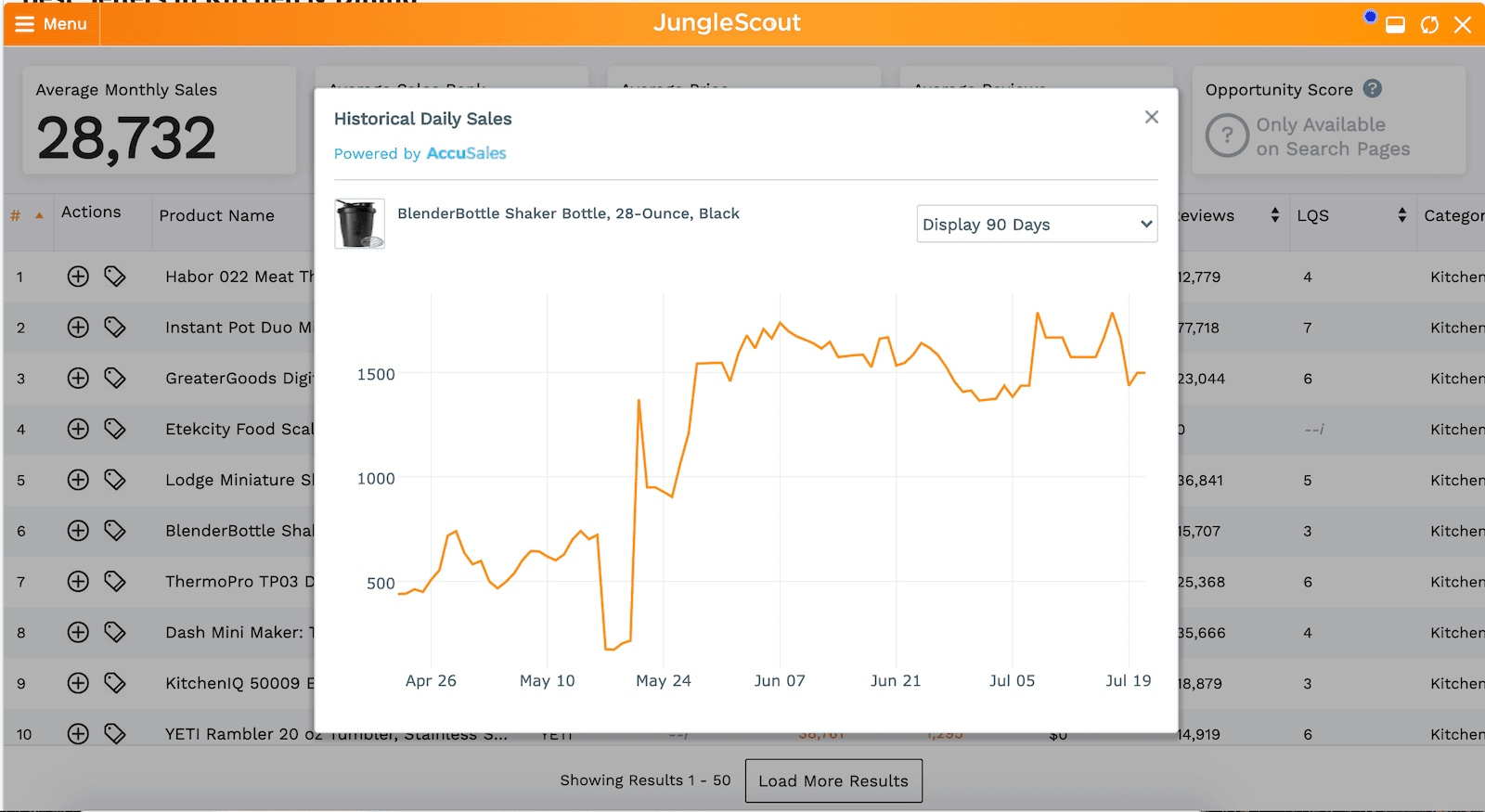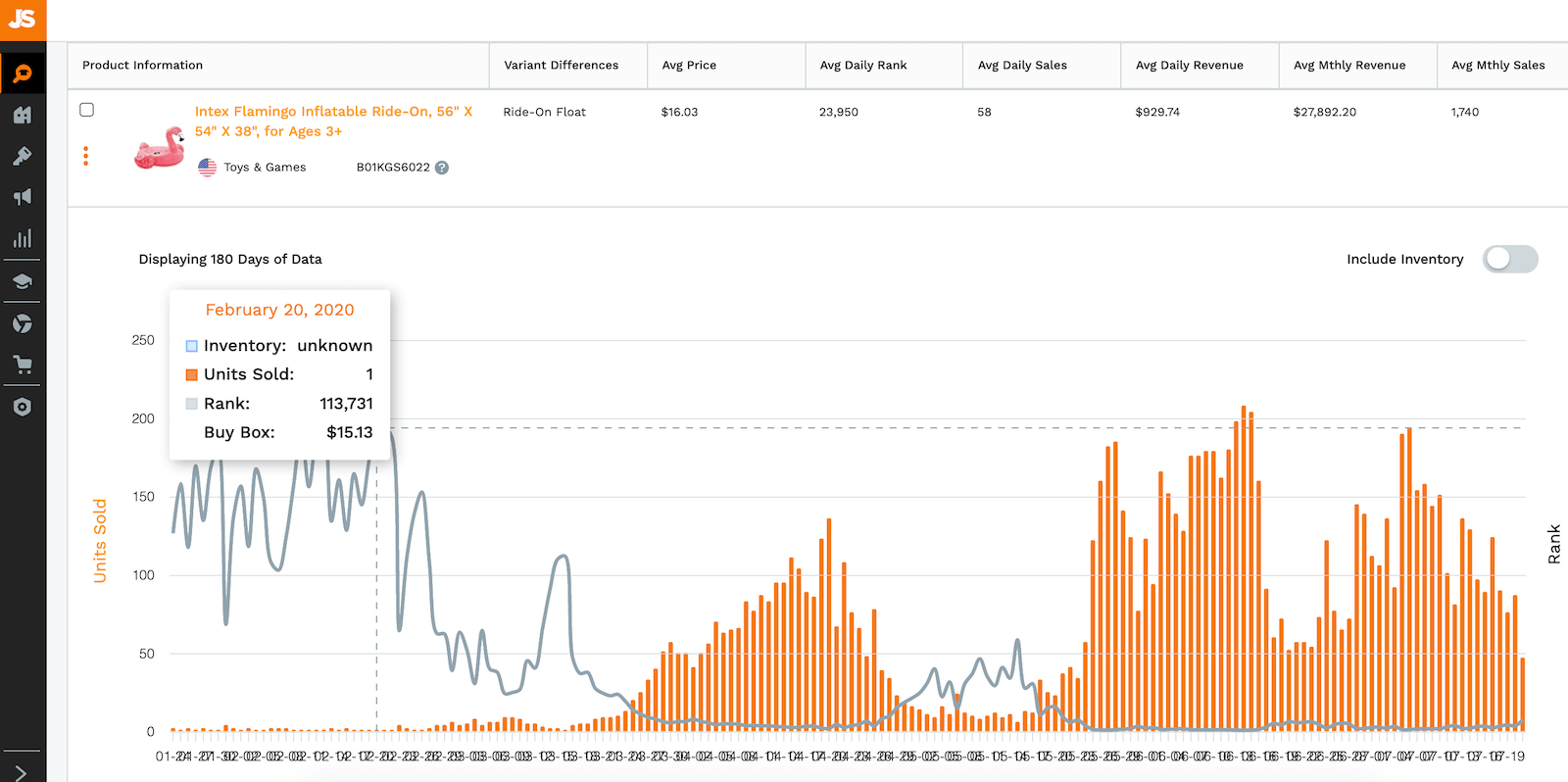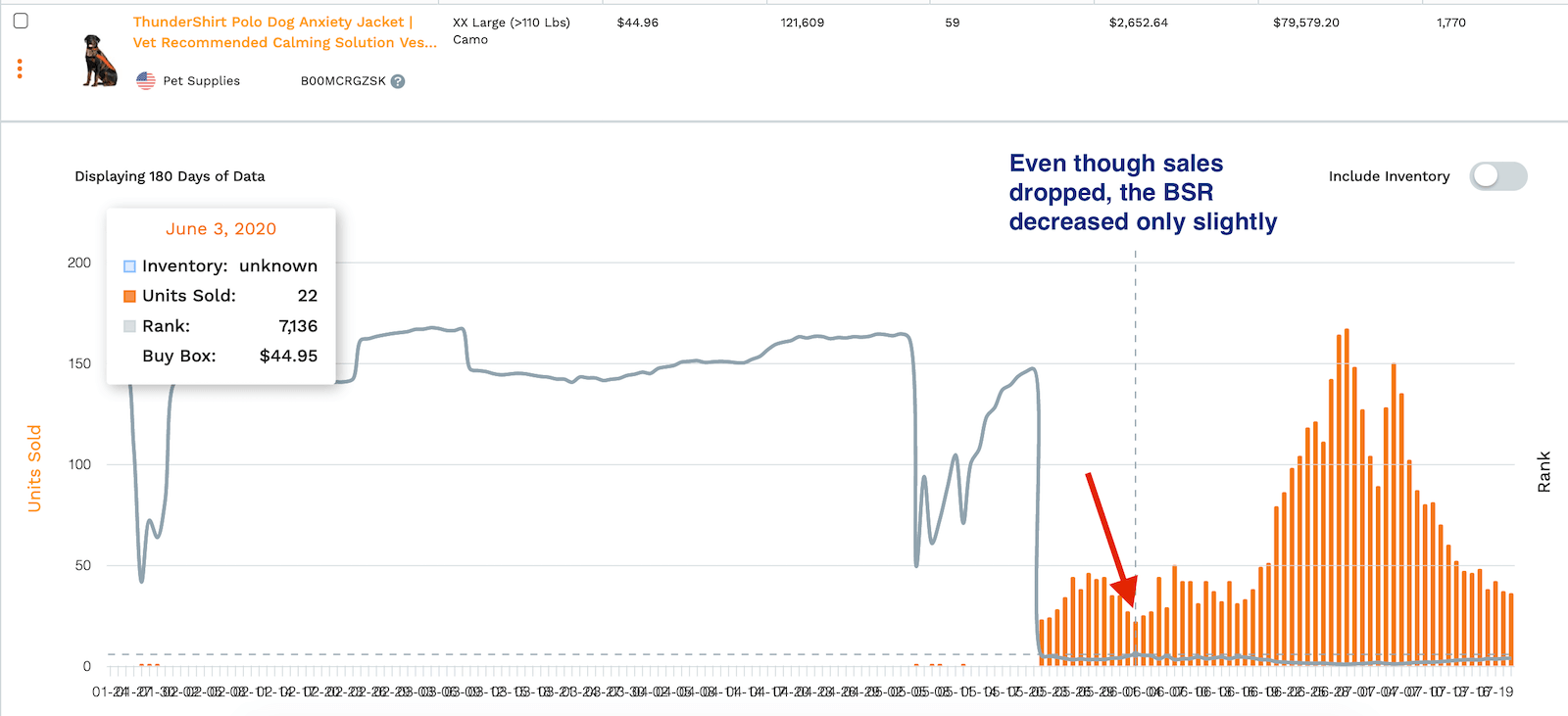The Amazon Sales Rank (also known as the Best Sellers Rank or BSR) is probably the most important building block of the FBA universe. Millions of dollars can be made or lost in an instant, when the sales rank fluctuates.
That’s why sellers have a love/hate relationship with it. It’s also why so many try to discover the secrets of Amazon’s BSR, or to look for undetectable ways to game it.
And while it’s unlikely that Amazon will ever divulge the ins and outs of its ranking system, there is information about its sales rank that every seller should know in order to increase their chances of success.
What is Amazon sales rank?
The Amazon sales rank — or BSR — is a number that represents the item’s popularity in a main category or sub-category. Every product on Amazon receives a ranking for its sub-categories, but not every product receives a ranking for their main category.
For example, many products sold in ‘Electronics’ don’t have a BSR for that main category. Instead, Amazon assigns them rankings for their sub-categories, like ‘Earbud & In-Ear Headphones.’
As for the BSR itself, it can range anywhere from 1 to 1 million+, with a higher number means fewer sales. The smaller the BSR, the more popular the product.
Here’s an example of Amazon’s BSR for the Instant Pot. In the image below, you can see it is ranked #2 in ‘Kitchen & Dining’ (the main category), and then #1 in the sub-categories ‘Slow Cookers’ and ‘Electric Pressure Cookers.’

9 details about Amazon’s sales rank you need to know
The Amazon seller community has long speculated on what factors Amazon takes into account in order to determine the BSR of a product. But, taking into account the complexity of the ranking system while analyzing all of the theories floating around to pinpoint those factors can discourage even the most motivated seller.
For that reason we’re focusing on the nine main signals that we know can make or break a product’s Best Sellers Rank.
1. To get a good BSR, you must have sales
Even if your product is unique in its category, it still needs to consistently gather sales in the initial days of its launch in order to start climbing up the seller ranks. That’s why it’s a good idea to start thinking about how to get that extra sales push before you launch.

For example, you may want to consider using a low-price-entry strategy, or run a product giveaway. You could announce your launch on social media, offer coupons, or work on your listing optimization.
In other words, whatever you do, don’t just list your product and forget it. Have a plan in place to get those initial sales before you activate your listing.
2. Focus on increasing your sales velocity
From the moment you launch to when you hit the #1 spot for your targeted keyword, your goal needs to be to bring in more sales every day.
This is called ‘sales velocity,’ and it can dramatically improve your BSR.

3. Your product needs a sales history
Amazon’s BSR is like a report card. It’s an indicator of past sales and sales performance. And the best way to get a good BSR is to focus on getting daily sales consistently and building up a solid sales history.
By emphasizing the development of a strong sales record for your product, you’ll see an overall improvement in your BSR.
Looking at the blender bottle currently holding the #6 position in the ‘Kitchen & Dining’ top 100, you can see in the following image that the sales for the bottle have been consistently recently, leading to the improvement in its BSR.

4. Sales consistency has a higher impact on your product’s BSR
If you get a lot of sales in a short amount of time you may see your BSR spike. But, if you can’t keep that sales momentum up, your recently-spiked BSR will plummet.
Should this happen, you’ll likely experience a negative impact to your keyword rankings. Consequently, it’s better to have consistent sales instead of lower sales with occasional sales spikes.
5. BSR is heavily influenced by seasonality
Let’s say it’s the beginning of March and you’re doing some Amazon product research. During your hunt, you discover that inflatable flamingos have a really low BSR and are getting tons of sales.
Based on that information, you may want to jump right in and put all of your savings into developing an inflatable flamingo product. But don’t do it!
In the case of the flamingo, the current BSR is merely tricking you into thinking that it is a good product opportunity. However, because this item is seasonal, what you’re really seeing are the seasonal spikes in sales that start in the spring (before spring break and warmer spring/summer months). These sales drop significantly in the autumn or winter months.

Remember, since the BSR indicates how well a product is currently selling (rather than how well it sells year round), you want to have consistent sales regardless of the season.
You can check the seasonality of a product using a tool like Jungle Scout’s Product Tracker, or by taking a look at Google Trends.
6. BSR is order-dependent, but not unit-dependent
After studying thousands of products, we noticed that an order of 30 units was given the same weight as an order of a single unit.
In other words, when it comes to Amazon’s BSR, the fact that someone ordered your product is more important than the number of units they purchased.
So, while selling more units per order might give your product a boost in its keyword rankings, it won’t boost your BSR.
7. Amazon updates its rankings regularly
Amazon is diligent about updating its rankings, refreshing the numbers at least every two to three hours. But it’s extremely difficult to be just as diligent when it comes to keeping track of your product’s BSR, particularly when it’s being updated so often.
For that reason, consider using a tool like Jungle Scout’s Alerts to let you know when there are changes to your product’s ranking. That way you can immediately make the necessary changes to get your item back on track.
8. BSR won’t drop dramatically if sales decrease
Everybody has a bad day — even products sold on Amazon. Thankfully, Amazon takes those momentary lapses in performance into account when calculating a product’s BSR.
For instance, if your sales drop 50%-60% on a given day, Amazon won’t dramatically decrease your product’s BSR based on that single day’s worth of data. Granted, the ranking may go down slightly after one or two days of lower sales, but as long as the drop in sales is short-lived, your product’s BSR should be fine.

However, while Amazon might not penalize your product for 1-2 days of low sales, a continued drop for 4-5 could hurt you. It can end up hurting your keyword rankings as well.
9. Product research can help your BSR
Doing your due diligence when it comes to product research really is one of the main contributing factors to your product’s success.
The amount of time you invest in finding the right product to sell can be a good indicator of the best seller rank that you can achieve.
Spend a few hours researching, and the best you might be able to hope for is a product that turns a small profit. Spend a few weeks researching, and you may find a product that ends up being the next big thing (with a BSR of 1!
Research strategies to better your product’s chance of getting a low BSR
To increase your chances of finding a product that could garner lots of sales and a low BSR, here are three different strategies to use during your product research:
- Go for niches or categories where demand is really strong (ie. a minimum of 1,000 sales per month) and don’t be afraid of the competition. If you have a stellar product, generating sales and a good BSR is fairly easy. Just keep in mind that the initial investment could be higher.
- Find a specific niche where demand is a minimum of 300 sales per month, and is underserved by your potential competitors (ie. products listed are of very poor quality, products need improvements, customer service is poor, or listing quality is bad). You can dominate the niche (and the BSR) by showing up your competitors with an optimized listing and a product that addresses their customers’ concerns.
- Pick products with a higher price point (ie. items selling for more than $30), and focus on categories where competition is scarce. This way you’ll be able to position your item as being a premium product. And by differentiating yourself from your competitors in this way, you’ll improve the item’s BSR.
What to do now?
Amazon’s Best Sellers Rank is not static. It changes often — in some cases, on an hourly basis — and holds the key to your Amazon success.
But, even though its complexity can be overwhelming, don’t spend too much time on your ranking. Instead, use your time to find ways to drive more sales, gain more positive reviews, and increase your organic keyword ranking.
By focusing your attention on optimizing every aspect of your listing, and not on your product’s BSR, you should see a steady improvement in your ranking.
Have you determined one of the factors involved in deciding a product’s rank? If you’re willing to share your secret, we’d love to hear it! Feel free to add it to our comment section.

 18 Comments
18 Comments
18 comments on “Master The Amazon Sales Rank: Top 9 Things You Need to Know”